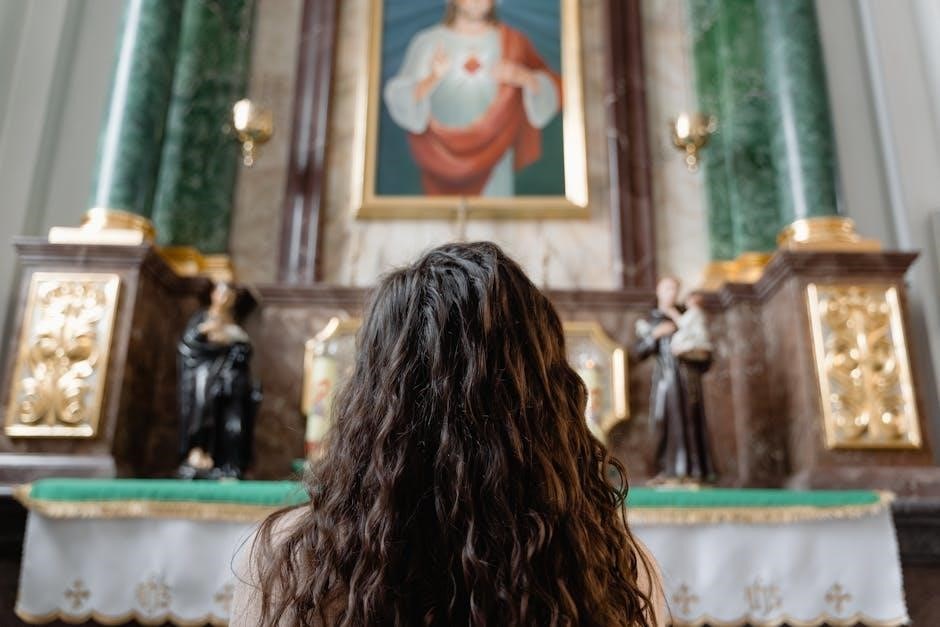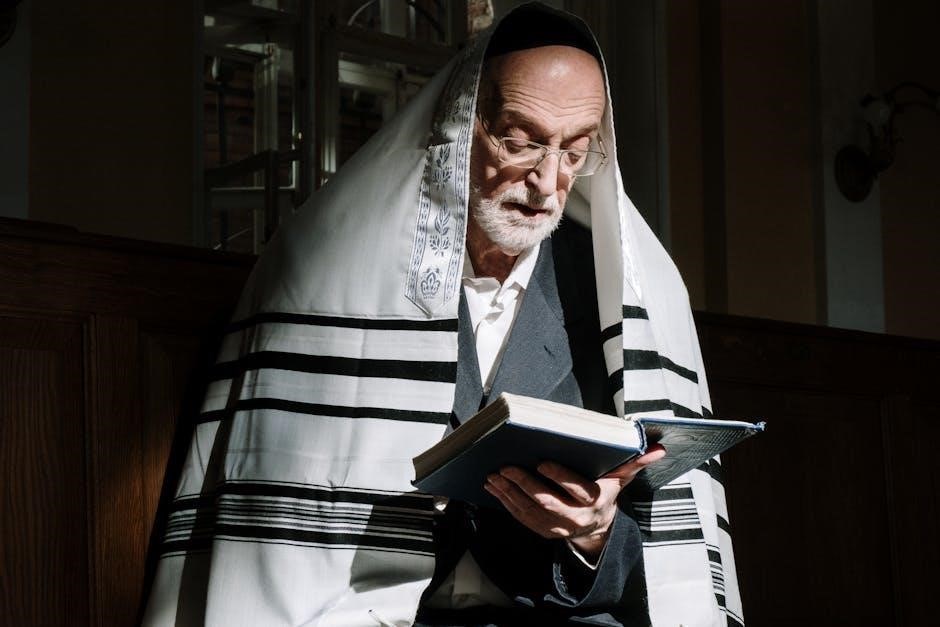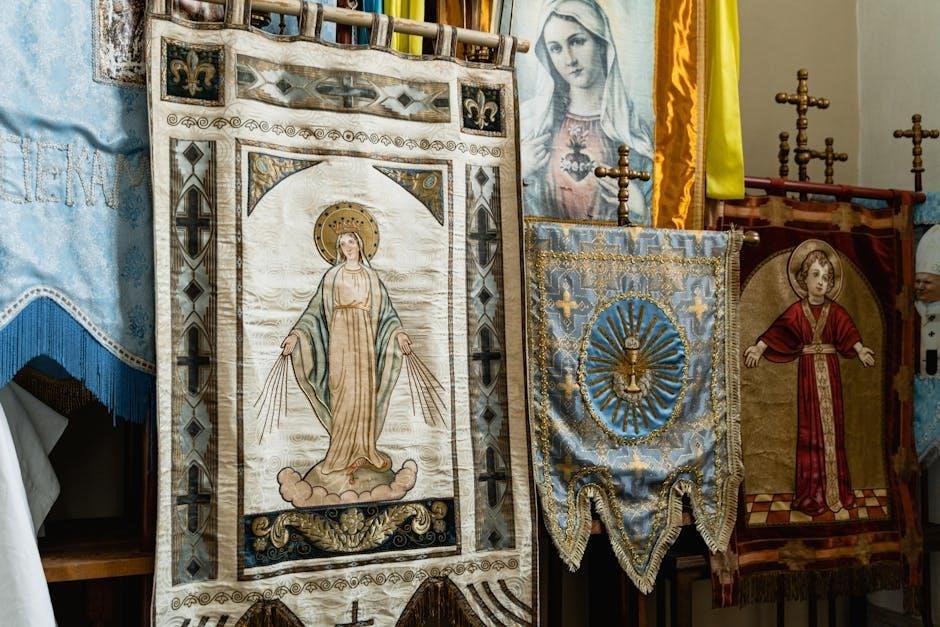The Eucharist, a cornerstone of Christian faith, is deeply rooted in Jewish tradition. Understanding Jesus’s actions and words during the Last Supper requires exploring its Jewish context, revealing profound connections to Passover and messianic expectations.

The Last Supper as a Passover Seder
Examining the Last Supper as a Passover Seder provides vital insights. Understanding the rituals, symbols, and meal’s significance reveals deeper meanings behind Jesus’s actions and their connection to Jewish customs and traditions.
Understanding the Passover Meal at the Time of Jesus
To fully grasp the Last Supper’s significance, it’s crucial to understand the Passover meal during Jesus’s time. This involves exploring the specific rituals observed, the foods consumed, and the overall atmosphere of anticipation for liberation. Examining the Seder plate, the order of events, and the prayers recited provides context. It helps reveal how Jesus infused the traditional Passover with new meaning, connecting it to his impending sacrifice and the promise of a new covenant. Understanding the meal’s historical and cultural backdrop illuminates the depths of the Last Supper.
Jewish Messianic Expectations and the Eucharist
The Eucharist is intertwined with Jewish messianic expectations. Understanding the hopes for a new exodus and the coming of the Messiah illuminates the meaning Jesus gave to the bread and wine during the Last Supper.
The Hope for a New Exodus
First-century Jews anticipated a new exodus, a liberation from oppression mirroring the original exodus from Egypt. This expectation shaped their understanding of the Messiah’s role. They believed the Messiah would usher in an era of freedom and restoration, echoing the miraculous events of the past. The Eucharist, in this context, becomes a symbol of this new exodus, a participation in the saving act of Jesus, the Messiah, who leads his people to ultimate freedom. This hope infused their religious life and understanding of salvation.
The Coming of the Messiah
Jewish messianic expectations were diverse, yet united in the anticipation of a future king who would restore Israel. This figure was expected to be a descendant of David, a powerful leader, and a righteous judge. The Messiah’s arrival would signal a new era of peace, justice, and divine favor. Jesus, in his words and actions, particularly during the Last Supper, presented himself as the fulfillment of these messianic hopes. The Eucharist becomes a tangible representation of his messianic presence, a foretaste of the promised kingdom, and a pledge of its ultimate realization.
The Eucharist as a Fulfillment of Jewish Tradition
The Eucharist is not a completely new concept, but a fulfillment of key Jewish traditions. Elements like the Bread of the Presence and manna in the wilderness find their ultimate meaning in it.
The Bread of the Presence
The Bread of the Presence, or Showbread, was a sacred offering in the Temple, symbolizing God’s covenant with Israel. This bread was continually present before God, representing the nation’s devotion and God’s provision. In the Eucharist, Jesus, as the Bread of Life, becomes the ultimate Bread of the Presence. He is the new and eternal offering, fulfilling the symbolic meaning of the ancient Temple ritual. The Eucharist is the true bread from heaven, offering eternal life to those who partake, surpassing the old covenant’s limitations and establishing a new, everlasting covenant.
Manna in the Wilderness
During the Exodus, God provided manna to sustain the Israelites in the wilderness, foreshadowing the Eucharist. This miraculous bread from heaven nourished them physically, but it was temporary. Jesus, in the Gospel of John, contrasts manna with the “true bread from heaven,” which gives eternal life. The Eucharist, therefore, surpasses manna, offering spiritual nourishment and communion with Christ himself. Partaking in the Eucharist connects believers to this divine provision, fulfilling the promise symbolized by manna and offering a foretaste of the heavenly banquet. It is a perpetual reminder of God’s faithfulness and sustenance.
Dr. Brant Pitre’s Perspective
Dr. Brant Pitre offers a unique lens, examining the Eucharist through 1st-century Jewish eyes. His work illuminates the Last Supper’s context, unveiling the richness of Jewish tradition in understanding the Eucharist;
Examining the Eucharist Through 1st Century Jewish Eyes
Understanding the Eucharist necessitates stepping back into the world of 1st-century Judaism. This involves comprehending the cultural, religious, and historical context in which Jesus lived and ministered. By examining Jewish customs, beliefs, and expectations surrounding meals, especially the Passover Seder, we gain invaluable insights into the significance of the Last Supper. This perspective allows us to interpret Jesus’s actions and words through the lens of his contemporary audience, uncovering the profound Jewish roots of the Eucharist and its deeper meaning for early Christians and believers today.
Using Hebrew Scriptures and Jewish Tradition
To truly grasp the essence of the Eucharist, it is essential to delve into the Hebrew Scriptures and Jewish tradition. These ancient texts and practices provide a rich tapestry of understanding, illuminating the symbolism and significance of the Last Supper. Exploring concepts like the Bread of the Presence, the manna in the wilderness, and messianic prophecies unlocks deeper layers of meaning within the Eucharist. By engaging with rabbinic interpretations and historical context, we can appreciate how Jesus fulfilled Jewish hopes and traditions in this sacred meal, revealing its profound Jewish roots and significance.
The Real Presence of Jesus in the Eucharist
The Eucharist is not merely a symbol, but the true body, blood, soul, and divinity of Jesus Christ. This belief finds its foundation in Jewish faith, tradition, practices and beliefs.
Body, Blood, Soul, and Divinity
The Catholic Church teaches that the Eucharist is not simply a symbolic representation, but the actual body, blood, soul, and divinity of Jesus Christ. This doctrine, often challenging to grasp, stems from Jesus’s own words at the Last Supper: “This is my body… This is my blood.” Understanding this requires delving into the Jewish concept of covenantal sacrifice, where blood signifies life poured out, and body represents the totality of a person’s being. By offering his body and blood, Jesus makes himself fully present in the Eucharist, a divine gift.

The Significance of Jewish Faith and Practices
Jewish faith, tradition, and practices form the bedrock for believing in Jesus’ real presence in the Eucharist. These elements are not merely historical background, but the very foundation of this belief.
Foundation for Belief in the Real Presence
The Jewish understanding of covenant, sacrifice, and sacred meals provides a crucial foundation for comprehending the Real Presence of Jesus in the Eucharist. Examining the Passover Seder, the manna in the wilderness, and the bread of the Presence reveals the rich symbolism and theological framework within which Jesus instituted the Eucharist. These traditions highlight God’s provision, presence, and promise of redemption, creating a fertile ground for accepting the profound reality of Christ’s body and blood in the Eucharist. Thus, the Jewish roots are not merely historical context but are essential for grasping the depths of this sacrament.

The Eucharist and the New Passover
Jesus’s death and resurrection transformed the Passover into a new covenant, fulfilled in the Eucharist. This sacrament becomes the memorial of Christ’s sacrifice, offering redemption and eternal life to believers.
Jesus’ Death and Resurrection as the New Passover
Jesus’s ultimate sacrifice on the cross, followed by his glorious resurrection, marks the definitive fulfillment of the Passover narrative. Just as the blood of the lamb saved the Israelites from physical death, Jesus’s blood, shed on Calvary, offers salvation from spiritual death. This new Passover is commemorated and made present in the Eucharist. Through this sacrament, believers participate in Christ’s saving act, receiving the promise of eternal life and becoming partakers of the divine nature. The Eucharist, therefore, is not merely a symbol but a real participation in the New Passover.

Misunderstanding Jesus Without Jewish Context
Separating Jesus from his Jewish roots risks a distorted understanding of his teachings and actions. Neglecting the Jewish context can lead to misinterpretations of the Eucharist, diminishing its profound significance.
The Risk of Separating Jesus from Jewish Faith and Hope
Pope Benedict XVI emphasized that isolating Jesus’s words from the faith and hope of the Jewish people leads to misunderstanding. Without understanding the Jewish context, the significance of the Eucharist and Jesus’s intent behind “Eat my body, drink my blood” become obscured. His identity and mission are intertwined with Jewish messianic expectations, the hope for a New Exodus, and the traditions of Passover. Ignoring these connections diminishes our comprehension of Jesus’s message and the Eucharist’s profound meaning. Embracing the Jewish roots enriches our understanding of Jesus and our faith.
The Eucharist: A Combination of Jewish Traditions
The Eucharist is a blend of Jewish practices: the synagogue service and the Passover meal. Early Jewish Christians adapted these traditions, forming the basis of the Christian Eucharist as it’s practiced today.
Synagogue Service and Passover Meal
The early Christian Eucharist creatively combines elements from both the Jewish synagogue service and the Passover Seder meal. The synagogue service provided a framework of scripture readings, prayers, and communal worship. The Passover Seder, with its rich symbolism of redemption and covenant, offered a context for understanding Jesus’s sacrifice. This fusion created a unique expression of faith, rooted in Jewish heritage and transformed by the revelation of Jesus as the Messiah, resulting in a profound and meaningful experience for believers in the early church. The Eucharist, thus, stands as a testament to the continuity between Judaism and Christianity.
Midrash and Rabbinic Interpretation
Midrash, ancient rabbinic commentary on Hebrew Scriptures, provides valuable insights. Understanding these interpretations sheds light on the Jewish context of Jesus’s words and actions, deepening appreciation for the Eucharist’s significance and meaning.
Understanding the Hebrew Scriptures
To fully grasp the Eucharist’s significance, it’s crucial to understand the Hebrew Scriptures, also known as the Old Testament. These scriptures provide the foundational context for Jesus’s life, teachings, and actions. They reveal the Jewish worldview, traditions, and messianic expectations that shaped the Last Supper. Examining key themes like covenant, sacrifice, and redemption within the Hebrew Scriptures illuminates the Eucharist as a fulfillment of ancient promises. Rabbinic interpretations, known as Midrash, offer additional layers of understanding, providing insights into how first-century Jews would have understood these texts and their relevance to Jesus’s ministry.
The U.S. Catholic Church’s Eucharistic Revival
The U.S. Catholic Church has initiated a Eucharistic Revival, aiming to renew understanding and devotion to the Eucharist. This revival seeks to address declining belief in the Real Presence and inspire deeper engagement with the sacrament. By emphasizing the Eucharist’s central role in Catholic life, the revival encourages prayer, adoration, and a renewed appreciation for the Mass. Examining the Jewish roots of the Eucharist, as highlighted by scholars like Brant Pitre, can enrich this revival by providing historical and theological context, fostering a more profound connection to this sacred tradition.